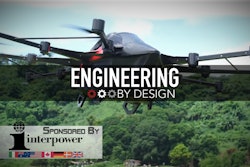In mankind’s quest to break free from the shackles of gravity, recent aerospace engineering has focused on jet packs, electric planes and even flying cars.
Some of these attempts stem more from science fiction-driven fantasies than commercial viability, but a new prototype developed by engineers at the Massachusetts Institute of Technology is looking to bridge the gap between the two.
A team recently unveiled plans for a silent, zero-emissions plane with no moving parts. Nine years in the making, it recently completed its maiden flight using electrodes in place of propellers and turbine blades.
These electrodes produce nitrogen ions, or ionic wind, to propel the plane through the air.
Now, before you start looking to book a flight, you should know that this preliminary model weighs about five pounds and carries a 15’ wingspan. It’s covered in an array of positive and negative electrode wiring, with the fuselage carrying the lithium-polymer batteries needed to charge those wires.
Once the wires receive power from the batteries, they’re able to attract and displace negatively charged electrons from surrounding air molecules, leaving clouds of ions which interact with the negatively charged wires. This results in the creation of thrust, which propels the craft forward.
Again, at the risk of tempering any well-deserved enthusiasm, the plane has maxed out at a flight distance of just over 180’.
The next steps will be improving the overall efficiency of the design, i.e. producing more ionic thrust with less electrical charge. This will allow for using smaller, lighter batteries as the size of the design starts to scale-up.






















